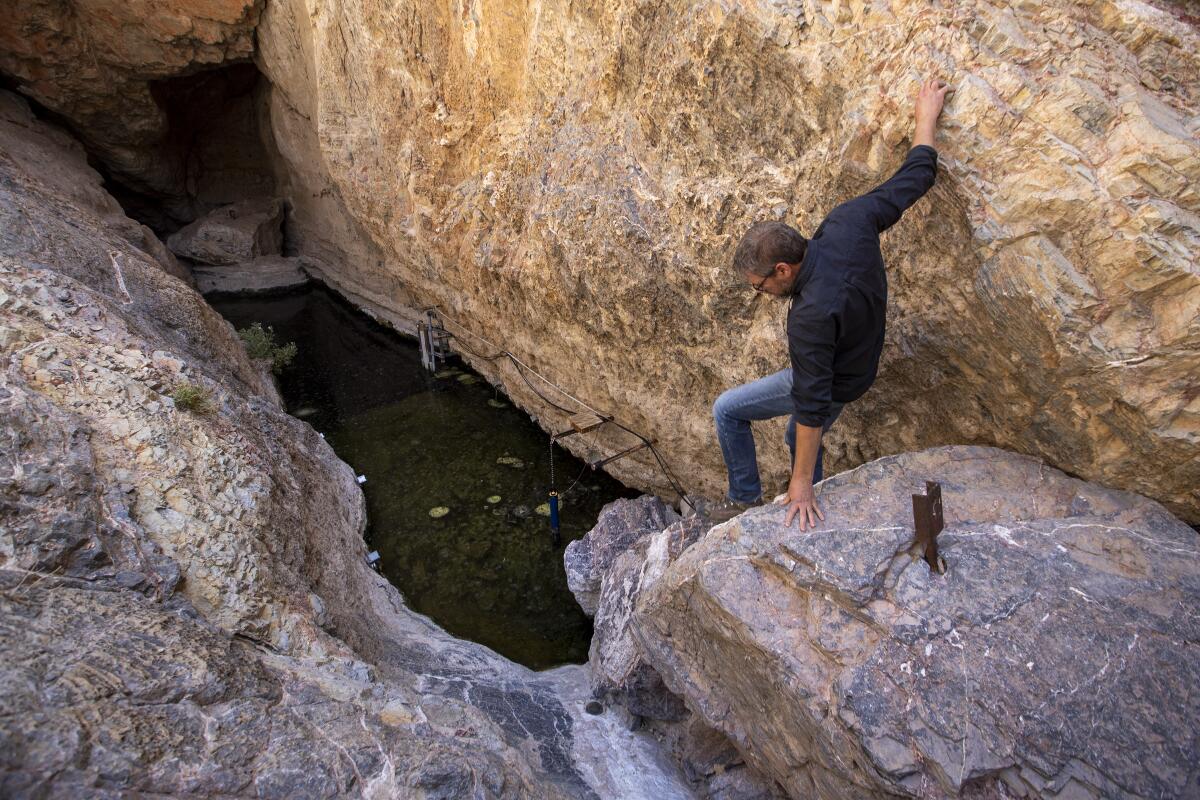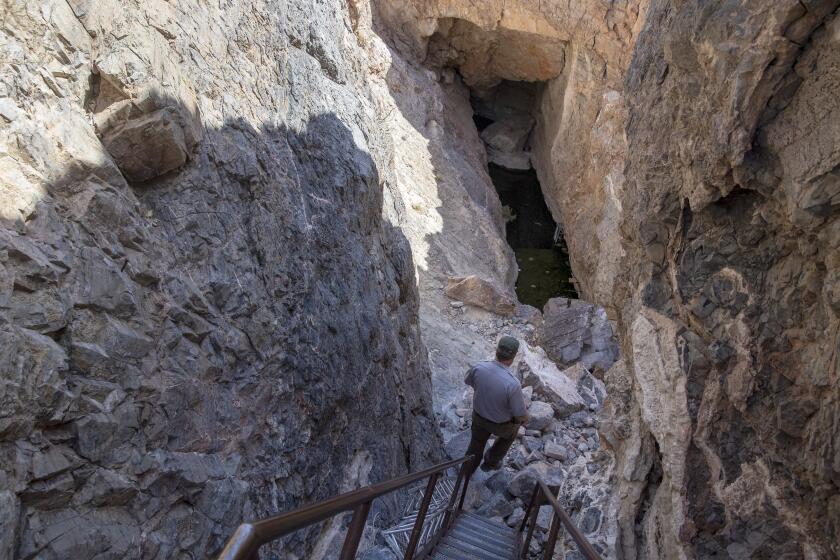Mexico earthquake triggers ‘desert tsunami’ 1,500 miles away in Death Valley cave

- Share via
About five minutes after the 7.6 magnitude earthquake hit near Mexico’s southwest coast Monday, typically calm water deep in a Death Valley National Park cave started sloshing against the surrounding limestone rock.
The reverberations from the earthquake more than 1,500 miles away created what experts have called a “desert tsunami,” which on Monday made waves erupt up to 4 feet high in the cave known as Devils Hole, a pool of water about 10 feet wide, 70 feet long and more than 500 feet deep, in Amargosa Valley, Nev.
The water in the partially filled cave has become an “unusual indicator of seismic activity” across the world, with earthquakes across the globe — as far as Japan, Indonesia and Chile — causing the water to splash up Devils Hole, according to the National Park Service website.
Interestingly, the 6.8 magnitude earthquake that also hit Mexico‘s southwest coast early Thursday — not far from Monday’s epicenter — did not agitate the water or create any waves in Devils Hole, said Kevin Wilson, National Park Service aquatic ecologist. Thursday’s earthquake struck outside Aguililla, a small town in the western state of Michoacán, just after 1 a.m., and caused at least two deaths. Two people also died in Monday’s earthquake, the epicenter also in Michoacán, though farther east.
The damage was surprisingly limited for an earthquake that U.S. authorities said had a magnitude of 7.6 on the Richter scale.
“It depends on the depth, magnitude and location around the world,” Wilson said. He said typically earthquakes along the Pacific’s “Ring of Fire” that reach at or above a magnitude 7 will register in Devils Hole.
Devils Hole is home to the endangered pupfish, a unique breed that can face short-term challenges following the geological phenomenon, technically called a seiche. The waves in the cave stir sediment and splash away the algae growing on a shallow shelf, which the pupfish rely on to feed, and can also smash some pupfish eggs, Wilson said.
But, he said, in the long term, the movement from earthquakes helps remove the buildup of organic matter, which over time, can suck oxygen from the unique ecosystem.
“This kind of resets the system,” Wilson said. He said the waves Monday lasted about 30 minutes before calming down.
It was almost 10 years ago that biologists feared the Devil’s Hole pupfish was on the verge of extinction. Things look a little better today.
Wilson said it’s rare for the grown pupfish to die in these events, but said park rangers will continue to provide supplemental feedings for the fish, which have seen resurgence in its population in recent years. In March, officials recorded 175 of the Devils Hole pupfish — up from 35 about a decade ago — and Wilson said the fall count is planned for this weekend.
The geothermal pool in the cave, which stays at around 93 degrees year-round, coupled with its low oxygen levels, makes Devils Hole an “extreme” environment, Wilson said — not to mention the infrequent but repeated earthquake aftershocks.
“The pupfish have survived several of these events in recent years,” Wilson said. “We didn’t find any dead fish after the waves stopped.”
The last such “desert tsunami” was recorded in July 2019, when waves rose up to 15 feet, according to National Park Service officials, after a 7.1-magnitude earthquake hit near Ridgecrest.
More to Read
Sign up for Essential California
The most important California stories and recommendations in your inbox every morning.
You may occasionally receive promotional content from the Los Angeles Times.













